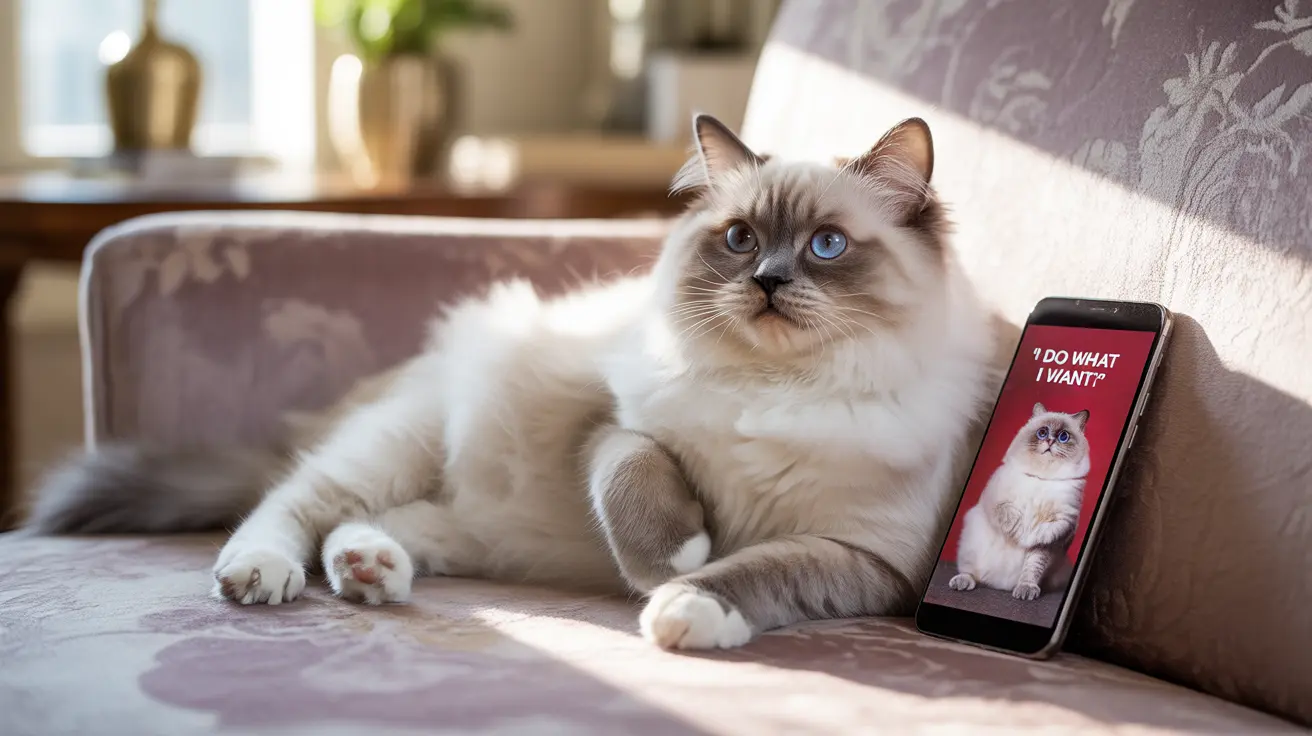The Rise of Fat Cat Memes: A Digital Evolution
The journey of fat cat memes began in the early days of social media, when pet owners started sharing photos of their rotund felines online. What started as simple photo sharing quickly evolved into a cultural phenomenon, with users adding clever captions, creating elaborate photoshops, and developing specific formats that would become iconic in their own right.
The "BODE" phenomenon of 2016 marked a significant milestone, introducing a new way to celebrate these fuller-figured felines. These posts, featuring photos of large cats with the simple caption "BODE" (short for "bodacious"), demonstrated the power of simplicity in meme culture, often garnering tens of thousands of shares within days.
From Internet Fame to Cultural Icon
Perhaps no recent example better illustrates the cultural impact of fat cat memes than Bender, the Australian feline sensation known as "Huh Cat." Weighing in at 13 kg, Bender's distinctive meow and expressive face have earned him over 4 million followers across social media platforms, inspiring everything from fan art to billboard advertisements.
The phenomenon has even transcended into the fine art world, with artists like Svetlana Petrova creating sophisticated works that insert rotund cats into classical masterpieces. Her "Fat Cat Art" project, featuring her cat Zarathustra, has helped elevate fat cat memes from simple internet jokes to legitimate artistic expression.
The Social Impact and Commentary
Beyond their entertainment value, fat cat memes often carry deeper social significance. The term "fat cat" has long been used in political and economic contexts to represent wealth and privilege, and modern memes sometimes incorporate this metaphorical meaning in subtle ways.
However, these memes have also sparked important conversations about pet health and responsible ownership. While celebrating these chunky felines' charm, many creators now balance humor with awareness about feline obesity and wellness.
Digital Culture and Artistic Expression
The creativity spawned by fat cat memes seems limitless. From elaborate photoshop battles to carefully crafted parodies of famous artworks, these memes showcase the internet community's incredible artistic potential. Platforms like Reddit, Instagram, and TikTok continue to serve as breeding grounds for new variations and interpretations.
The phenomenon has also inspired professional artists and content creators to push boundaries, resulting in everything from merchandise lines to gallery exhibitions. This fusion of popular culture and artistic expression demonstrates the unique way internet memes can bridge different forms of media and creativity.
Frequently Asked Questions
What are fat cat memes and how did they become popular on the internet?
Fat cat memes originated from people sharing photos of their overweight cats online, which quickly evolved into a widespread internet phenomenon. Their popularity stems from the universal appeal of cats, combined with clever captions and relatable humor that resonates across cultural boundaries.
Who is Bender the "Huh Cat" and why is he famous in fat cat meme culture?
Bender is an Australian cat who went viral in 2023 after a video of his distinctive "huh" meow spread across social media. Weighing 13 kg, he has amassed over 4 million followers across platforms and inspired international fan art, merchandise, and even billboards.
How do fat cat memes blend humor with social or political commentary?
Fat cat memes often incorporate subtle social commentary, playing on the traditional "fat cat" metaphor for wealth and privilege while maintaining their humorous appeal. This dual nature allows them to serve as both entertainment and cultural critique.
Are there any health concerns or debates related to celebrating overweight cats in memes?
Yes, there are ongoing discussions about whether celebrating overweight cats in memes might normalize or encourage unhealthy pet care practices. Many content creators now balance humor with responsible messaging about pet health and wellness.
How have artists like Svetlana Petrova used fat cat images in classical art and meme culture?
Svetlana Petrova's "Fat Cat Art" project digitally incorporates her cat Zarathustra into famous classical paintings, creating a unique fusion of high art and internet culture. This work has been exhibited in galleries and has helped legitimize fat cat memes as a form of artistic expression.






